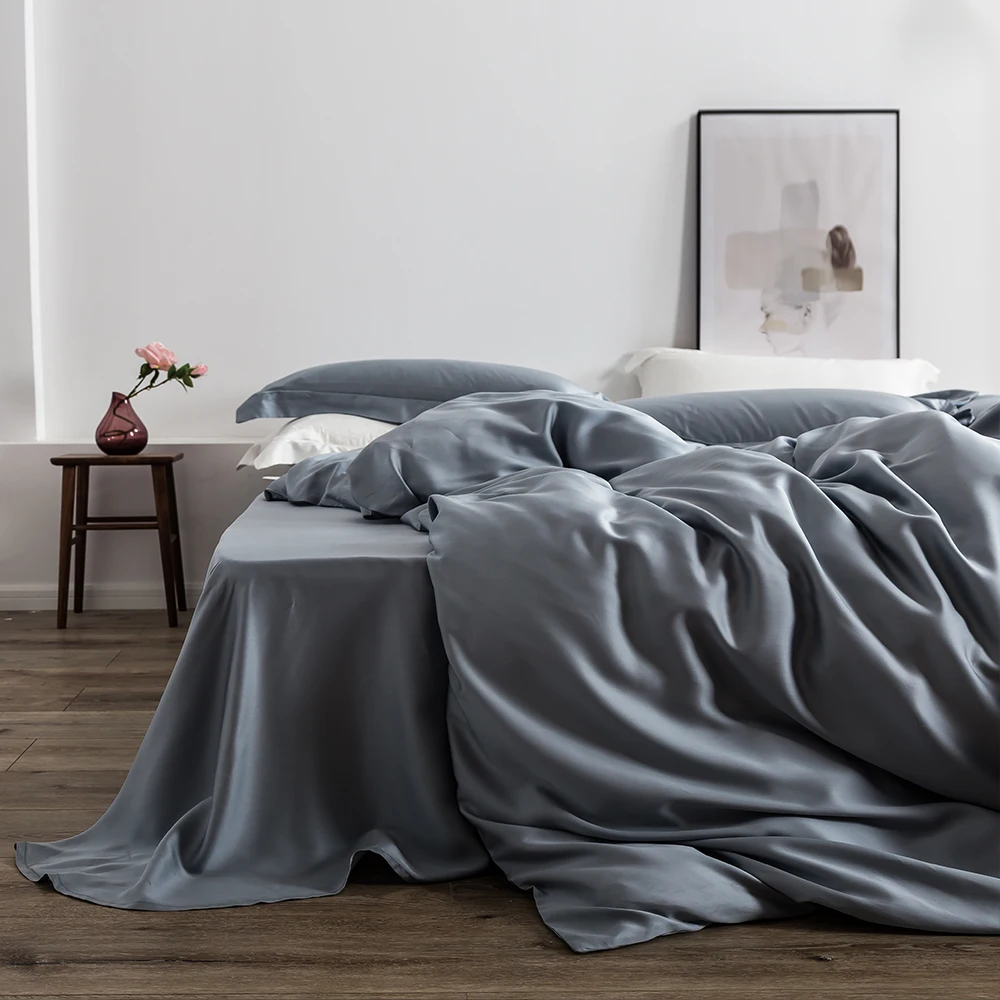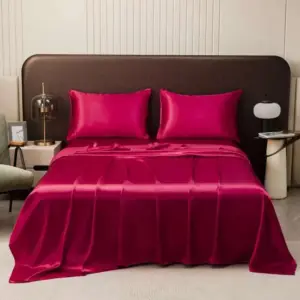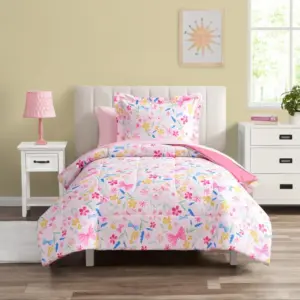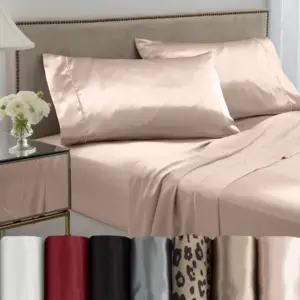Understanding Night Sweats: Why They Disrupt Your Sleep
Night sweats are more than just feeling a bit warm during sleep. They’re episodes of excessive sweating that can soak through your pajamas and bedding, making sleep uncomfortable and disrupted. Unlike normal perspiration, night sweats are often intense enough to wake you from sleep, leaving you feeling damp, chilled, and uncomfortable.
Several factors commonly trigger night sweats:
- Hormonal changes: Menopause, thyroid issues, and hormonal fluctuations
- Medications: Certain antidepressants, hormone treatments, and fever reducers
- Room environment: Overly warm bedroom temperature or too many blankets
- Stress and anxiety: Mental health factors that affect body temperature
- Medical conditions: Infections, certain cancers, and autoimmune disorders
Nearly 41% of people report experiencing night sweats regularly, with the problem affecting sleep quality significantly. When you wake up damp and uncomfortable, you’re likely to experience fragmented sleep patterns and daytime fatigue.
The fabric surrounding you during these episodes plays a crucial role in either relieving or worsening your discomfort. Many conventional bedding materials trap heat and moisture against your skin, creating a cycle of discomfort that’s difficult to break. That’s where the right fabric choice becomes essential for addressing the root causes of night sweat discomfort.
Understanding how temperature regulation in silk sheets works can be the first step toward finding relief from these disruptive episodes.
The Science of Silk: Nature’s Thermoregulator
Silk isn’t just luxurious—it’s a marvel of natural engineering with a unique structure that makes it exceptionally suited for temperature management. At its core, silk is a protein fiber produced by silkworms, primarily consisting of two proteins: fibroin (the core structural protein) and sericin (the sticky coating).
What makes silk fibers truly remarkable is their microscopic structure:
- Silk fibers are incredibly fine—approximately 1/5 the diameter of a human hair
- Each fiber has a triangular prism-like structure that refracts light (creating its signature luster) but also creates tiny air channels
- These fibers contain hollow filaments that trap air in tiny pockets
- The protein structure allows for incredible strength despite the delicate nature of individual fibers
This unique physical composition gives silk properties that synthetic materials simply cannot replicate. The hollow fibers create natural insulation without trapping excessive heat, while the protein structure interacts with moisture in remarkable ways.
When it comes to addressing night sweats specifically, silk’s natural composition works like a sophisticated temperature control system. The hollow fibers and air pockets create what scientists call “thermal buffering”—the ability to maintain a stable microclimate regardless of external conditions.
These natural characteristics have evolved over millions of years—silkworms developed these fibers as protective cocoons that needed to maintain stable conditions regardless of external temperature changes. Now, this same science behind silk sheets’ temperature regulation can help address the discomfort of night sweats.
How Silk Naturally Regulates Your Body Temperature
The Bi-Directional Cooling and Warming Effect
One of silk’s most remarkable qualities is its ability to adapt to your body’s needs throughout the night. Unlike synthetic materials that either insulate or cool (but not both), silk provides bidirectional temperature regulation. In warmer conditions or when your body temperature rises, silk allows heat to dissipate away from your body. When temperatures drop, those same fibers help retain your natural body heat.
This adaptability is crucial for night sweat sufferers, as body temperature can fluctuate significantly throughout the night. The thermal properties of silk bedding create a responsive microclimate that adjusts to these changes.
Creating the Perfect Microclimate
Silk effectively creates a buffer zone between your body and the outside environment. This microclimate remains relatively stable despite changes in room temperature or your body’s heat production. With a thermal conductivity rating significantly lower than cotton and most synthetics, silk doesn’t readily absorb and transfer your body heat away when you’re cool, nor does it trap excessive heat against your skin when you’re warm.
The Phase Change Material Effect
Scientists often describe silk proteins as natural “phase change materials”—substances that can absorb, store, and release heat as needed. This property comes from the molecular structure of silk proteins, which can slightly change their configuration in response to temperature and moisture.
When your body temperature rises—often the precursor to night sweats—silk begins absorbing some of this heat energy, helping to delay the onset of sweating. This temperature control benefit of silk sheets means many people find they sweat less frequently and less intensely when sleeping on silk compared to other materials.
The combination of these properties creates a natural thermoregulation system that helps maintain your body at a comfortable temperature throughout the night, reducing the conditions that typically trigger night sweats.
Silk’s Superior Moisture-Wicking Properties
When it comes to managing night sweats, how a fabric handles moisture makes all the difference in your comfort. Here, silk offers a distinct advantage through its sophisticated moisture management system.
The key distinction lies in understanding wicking versus absorption. Many fabrics like cotton excel at absorption—they soak up moisture like a sponge. While this might sound beneficial, absorbed moisture remains trapped in the fabric, creating that uncomfortable damp feeling against your skin.
Silk, by contrast, excels at wicking—drawing moisture away from your skin and allowing it to evaporate quickly. This distinction is crucial for night sweat sufferers.
Remarkably, silk can handle up to 30% of its weight in moisture while still feeling dry to the touch. This happens because moisture moves along the outside of silk fibers rather than being absorbed into them. Through a process called capillary action, silk draws moisture away from your body and distributes it across a wider surface area, promoting rapid evaporation.
For someone experiencing night sweats, this process means:
- Moisture is quickly moved away from your skin surface
- The dampness spreads over a larger area, enhancing evaporation
- You feel drier faster, even after a sweating episode
- The clammy feeling common with other fabrics is significantly reduced
The hypoallergenic science of silk shows these moisture-managing properties are enhanced by silk’s naturally smooth surface. Without rough fibers to trap moisture and create friction, silk creates the optimal environment for moving moisture away from your body efficiently.

Breathability: Allowing Your Skin to Respire
Breathability in fabrics refers to how easily air can pass through the material. This quality is essential for preventing the heat buildup that leads to night sweats. Silk’s natural structure creates exceptional breathability that significantly impacts sleep comfort.
The microscopic structure of silk allows for continuous air exchange between your body and the external environment. This air movement serves several important functions:
- Prevents heat from becoming trapped against your skin
- Allows fresh, cooler air to reach your body surface
- Helps carry away moisture vapor from perspiration
- Maintains optimal skin temperature throughout the night
When compared to other common bedding materials, silk’s air permeability stands out. Air flows through silk fabric approximately 30% more efficiently than cotton and significantly better than most synthetic options. This enhanced airflow means your skin can “breathe” more effectively throughout the night.
For night sweat sufferers, this breathability provides continuous relief by preventing the hot, stuffy feeling that often precedes sweating episodes. The constant air exchange helps maintain your skin temperature in the ideal range for comfortable sleep.
This natural ventilation system works in harmony with silk’s other properties to create an environment where your skin remains comfortably dry. Sanctuary Soft’s cooling silk sheets maximize this breathability to provide exceptional relief for those struggling with night sweats.
Silk vs. Other Fabrics: Comparative Performance for Night Sweats
When addressing night sweats, not all fabrics perform equally. Understanding how different materials handle heat and moisture can help you make informed choices for better sleep.
| Fabric | Breathability | Moisture-Wicking | Temperature Regulation | Drying Time |
|---|---|---|---|---|
| Silk | Excellent | Excellent | Excellent | Fast |
| Cotton | Good | Poor | Moderate | Slow |
| Synthetic | Poor | Moderate | Poor | Moderate |
| Bamboo | Very Good | Very Good | Good | Moderate |
| Linen | Excellent | Good | Good | Fast |
Cotton
While cotton is breathable, it has significant drawbacks for night sweat sufferers. Cotton absorbs moisture readily but holds onto it, creating a damp environment against your skin. This retained moisture can actually make you feel colder as the night progresses, potentially triggering temperature fluctuations that lead to more sweating. Additionally, cotton takes significantly longer to dry, meaning once wet, it stays wet.
Understanding the differences between cotton versus silk sheets reveals why many hot sleepers make the switch to silk. While cotton initially feels cool, its performance deteriorates once moisture becomes a factor.
Synthetic Fabrics
Polyester and microfiber materials often trap heat against the body. While some performance synthetics offer moisture-wicking properties, they typically lack breathability, creating a stuffy environment that can trigger sweating. Many synthetic fabrics also generate static electricity and can irritate sensitive skin, potentially worsening comfort for night sweat sufferers.
Bamboo
Bamboo offers good moisture management and breathability, making it better than cotton for night sweats. However, it doesn’t match silk’s temperature regulation capabilities. Bamboo tends to feel cooler than silk initially but doesn’t adapt as well to body temperature changes throughout the night.
Linen
Linen provides excellent breathability and good moisture management. However, its texture can feel rough against sensitive skin, and it wrinkles significantly. While effective for hot climates, linen doesn’t offer the same thermoregulating properties as silk, which adapts to both warm and cool conditions.
Silk stands out by offering the complete package of benefits: excellent breathability, superior moisture-wicking, adaptive temperature regulation, and quick drying time. This makes Mulberry silk sheets particularly effective for night sweat sufferers who need comprehensive moisture and temperature management.
The Hypoallergenic Advantage: Minimizing Skin Irritation
For many night sweat sufferers, skin irritation compounds their discomfort. Silk offers natural hypoallergenic properties that significantly reduce this problem.
Silk naturally resists common allergens that can trigger night sweats or worsen their effects:
- Dust mites struggle to live in silk fibers
- Mold and mildew resistance helps maintain a cleaner sleep environment
- Fungal growth is naturally inhibited by silk proteins
Beyond allergen resistance, silk’s incredibly smooth surface creates virtually zero friction against your skin. This smoothness is measured in microscopic terms—silk fibers lack the rough edges and protrusions found in most other natural fibers.
This matters because skin irritation often creates a cycle that worsens night sweats:
1. Rough fabrics irritate skin
2. Irritation increases skin temperature
3. Higher skin temperature triggers sweating
4. Sweating creates more friction and irritation
By eliminating this cycle, 100% silk sheets help reduce both the frequency and severity of night sweats. The smooth surface is particularly beneficial for those with sensitive skin conditions like eczema or rosacea, which can be aggravated by sweating episodes.
For those who experience night sweats due to hormonal fluctuations, silk’s gentle touch on the skin provides welcome relief during an already uncomfortable time. The natural properties of the fiber work with your body rather than against it, creating a supportive environment for restorative sleep.
Choosing the Right Silk for Night Sweat Relief
Not all silk products offer the same benefits for night sweat relief. Understanding the differences helps you select options that will provide maximum comfort.
Types of Silk
Mulberry silk stands out as the premier choice for night sweat management. Produced by silkworms fed exclusively on mulberry leaves, this silk type offers the finest, most uniform fibers with optimal temperature regulation properties. Other varieties like Tussah silk, while natural, have coarser fibers that don’t manage moisture quite as effectively.
Momme Weight Explained
Momme (mm) weight measures silk fabric density—similar to thread count in cotton. For night sweat management, the ideal range falls between 19-25 momme:
- 19-21 momme: Excellent breathability with good durability
- 22-25 momme: Slightly more substantial feel with outstanding temperature regulation
- Below 19 momme: May be too light and less durable
- Above 25 momme: May be too heavy for optimal breathability
Understanding silk momme weight helps you balance breathability with durability. For most night sweat sufferers, 22 momme provides the ideal balance of moisture management and fabric longevity.
Weave Types Matter
Different silk weaves affect how the fabric performs for night sweat relief:
- Charmeuse: The classic smooth silk weave with excellent moisture management
- Habotai: Lighter weight with superior breathability for severe night sweats
- Silk satin: Heavier with more sheen, but slightly less breathability
Quality Certifications
Look for OEKO-TEX certification, which ensures the silk is free from harmful substances—particularly important since you’ll be spending 6-8 hours in direct contact with the fabric each night.
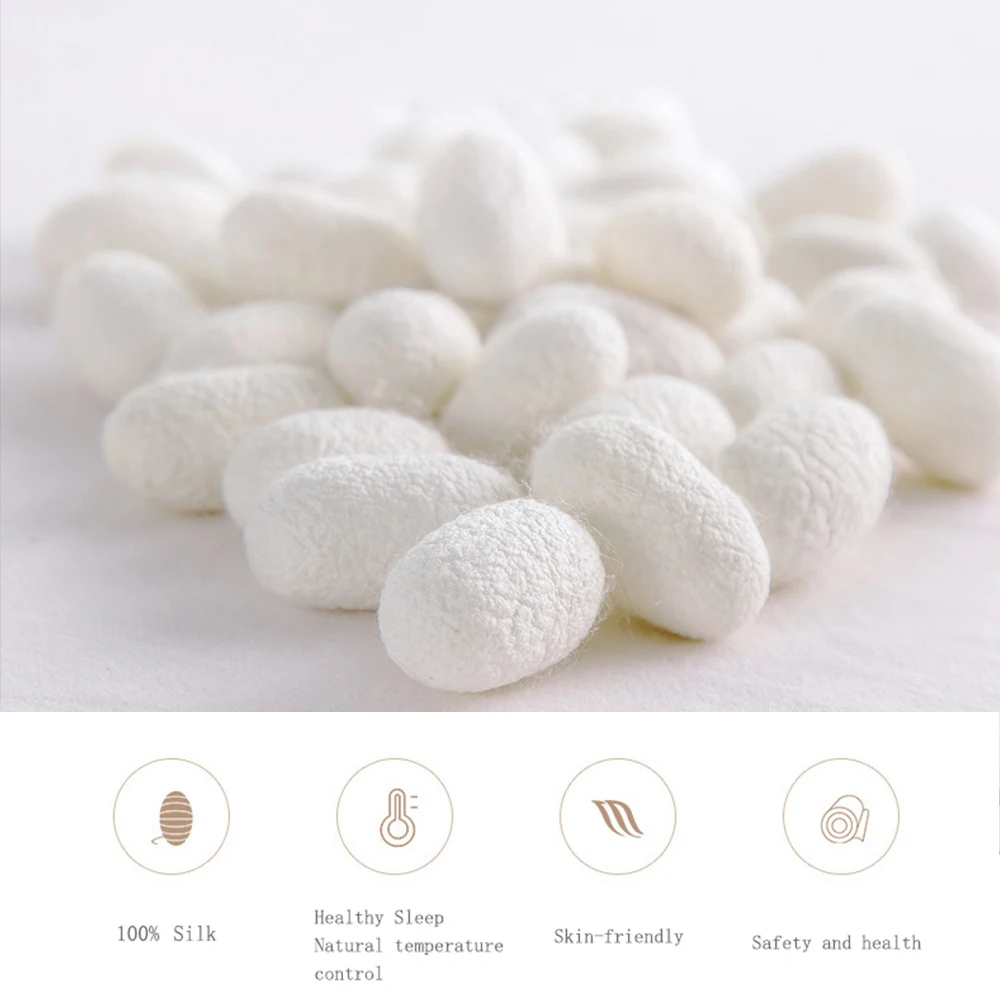
Essential Silk Products for Night Sweat Sufferers
Not all silk products deliver equal benefits for managing night sweats. Here’s a prioritized approach to incorporating silk into your sleep environment for maximum relief:
Silk pillowcases: Essential first purchase as your head and face often experience the most perspiration during night sweats. They provide immediate comfort and are typically the most affordable entry point.
Silk sheets: Deliver whole-body benefits by creating a complete microclimate around you. The flat sheet is particularly important as it’s in direct contact with most of your body.
Silk duvet covers: Help regulate temperature through your comforter, preventing the heat buildup that can trigger sweating episodes.
Silk pajamas: Complement bedding by adding another layer of moisture management directly against your skin throughout the night.
For those on a budget, start with a silk pillowcase and a top sheet, as these provide significant benefits at a lower initial investment. As you experience the difference, you can gradually add additional pieces.
Those experiencing severe night sweats should consider a complete silk sheet set for comprehensive relief. The full ensemble creates a consistent microclimate that maximizes all of silk’s beneficial properties.
For those preferring vegan options, advanced plant-based silk alternatives now offer similar moisture-wicking properties using sustainable materials like bamboo lyocell processed to mimic silk’s fiber structure.
Full-size Silk Sheets, King Size Silk Sheets, Queen Size Silk Sheets, Twin Size Silk Sheets, Washable Silk Sheets
Price range: $95.95 through $178.37 Select options This product has multiple variants. The options may be chosen on the product page100% Silk Sheets, Green Silk Sheets, King Size Silk Bedding Set, Mulberry Silk Bedding Sets, Queen Size Silk Bedding Set
Price range: $1,246.21 through $1,615.22 Select options This product has multiple variants. The options may be chosen on the product pagePink Silk Sheets, Twin Size Silk Sheets
$171.80 Select options This product has multiple variants. The options may be chosen on the product pageFull-size Silk Sheets, Pink Silk Sheets
$136.31 Select options This product has multiple variants. The options may be chosen on the product pageGrey Silk Sheets, Silk Sheet and Pillowcase Set
Price range: $88.20 through $146.64 Select options This product has multiple variants. The options may be chosen on the product pageBamboo Silk Sheets, Cooling Silk Sheets
Price range: $130.76 through $177.80 Select options This product has multiple variants. The options may be chosen on the product page
Remember that consistency in your sleep environment materials provides the best results—mixing silk with less breathable fabrics can undermine the temperature-regulating benefits.
Addressing Common Misconceptions About Silk and Temperature
Many people hold outdated beliefs about silk that might prevent them from considering it for night sweat relief. Let’s clarify some common misunderstandings:
“Silk is only for warm weather”
Actually, silk is one of the most adaptable fabrics across all seasons. Its temperature-regulating properties make it ideal year-round, helping to keep you cool in summer and comfortably warm in winter.
“Silk feels hot to sleep in”
This misconception likely stems from silk’s association with insulation in cold weather. In reality, silk feels cool to the touch initially (a property called “cool hand”) and continues to regulate temperature throughout the night.
“Silk is less breathable than cotton”
Scientific testing consistently shows silk has superior breathability compared to cotton of equivalent weight. The misconception may come from experiences with synthetic “silk-like” fabrics, which do trap heat.
“All luxury fabrics trap heat”
Many assume that any premium fabric must be densely woven and therefore hot. Silk breaks this rule by combining luxury with exceptional breathability due to its unique fiber structure.
Many questions about silk’s temperature regulation stem from comparing it to synthetic imitations rather than true, high-quality silk. The difference between genuine silk and polyester “silk” is substantial when it comes to managing night sweats.
Caring for Silk to Maintain Its Sweat-Fighting Properties
Proper care ensures your silk maintains its moisture-wicking and temperature-regulating properties over time:
- Hand wash in cool water with a mild detergent specifically formulated for silk
- Alternatively, use your washing machine’s delicate cycle in a mesh laundry bag
- Avoid bleach and enzyme-containing detergents which damage silk proteins
- Air dry away from direct sunlight, or use a dryer’s air-only setting
- Iron on the lowest setting when slightly damp, if needed
Wash silk bedding every 1-2 weeks to maintain optimal performance. More frequent washing may be needed initially if you experience significant night sweats, as body oils and perspiration residue can affect silk’s performance over time.
Regular care actually improves silk’s moisture management capabilities. After several gentle washes, silk becomes slightly more absorbent while maintaining its wicking properties—a process similar to “breaking in” the fabric.
With proper maintenance, high-quality silk bedding can maintain its night sweat-fighting properties for many years, making it a worthwhile investment for those seeking long-term relief.
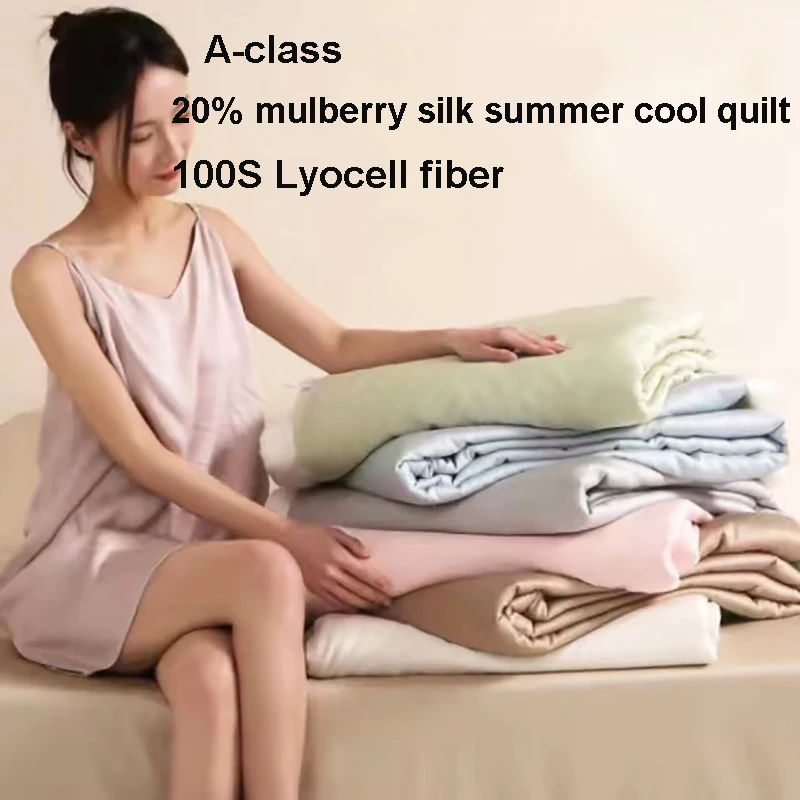
Is Silk Effective for Medical Causes of Night Sweats?
While silk provides relief for many night sweat sufferers, it’s important to understand its role in addressing medically-related night sweats:
For menopausal night sweats, silk offers significant symptomatic relief. Its temperature-regulating properties help manage the sudden heat fluctuations characteristic of hot flashes, while the moisture-wicking capabilities quickly address the resulting perspiration.
For those experiencing night sweats as medication side effects, silk bedding creates a more comfortable sleep environment that can mitigate the discomfort, though it won’t eliminate the underlying cause.
With hormone-related sweating, silk’s adaptive properties help accommodate the body’s fluctuating temperature needs throughout the night, reducing the intensity of sweating episodes.
It’s important to maintain realistic expectations—silk provides management of symptoms rather than a cure for medical causes of night sweats. The benefits can be substantial, however, with many users reporting:
- Reduced frequency of night sweat episodes
- Less intense sweating when episodes do occur
- Faster recovery and return to comfort after sweating
- Better overall sleep quality despite medical conditions
For serious medical causes of night sweats, silk bedding works best as part of a comprehensive approach that includes appropriate medical treatment. The comfort silk provides in hot weather complements medical interventions by improving sleep quality during treatment.
Frequently Asked Questions About Silk and Night Sweats
Is silk effective in all climates for preventing night sweats?
Yes, silk works in both warm and cool climates due to its unique temperature-regulating properties. It adapts to your body’s needs rather than to the ambient temperature, making it effective year-round.
How long do silk’s moisture-wicking properties last?
With proper care, high-quality silk maintains its moisture-wicking properties for many years. Regular gentle washing actually helps optimize these properties over time by removing body oils that might impede moisture transfer.
Can silk help with both hot flashes and night sweats?
Absolutely. Silk’s temperature-regulating properties help manage the sudden heat of hot flashes, while its moisture-wicking capabilities address the resulting perspiration that characterizes night sweats.
Is silk worth the investment compared to other cooling fabrics?
While silk requires a higher initial investment, its durability and comprehensive benefits make it cost-effective long-term. Unlike specialized “cooling” synthetic fabrics that often lose effectiveness after washing, silk maintains its natural properties throughout its lifespan.
Are there different grades of silk, and do they all help with night sweats?
Yes, silk quality varies significantly. Mulberry silk with a momme weight between 19-25 provides optimal night sweat relief. Lower-quality silks or blends may not offer the same moisture-wicking and temperature-regulating properties.
Do silk pillowcases alone help with night sweats?
Silk pillowcases provide significant localized relief for facial and head sweating, which many people find most bothersome. However, for whole-body night sweats, complete silk bedding delivers more comprehensive benefits.

